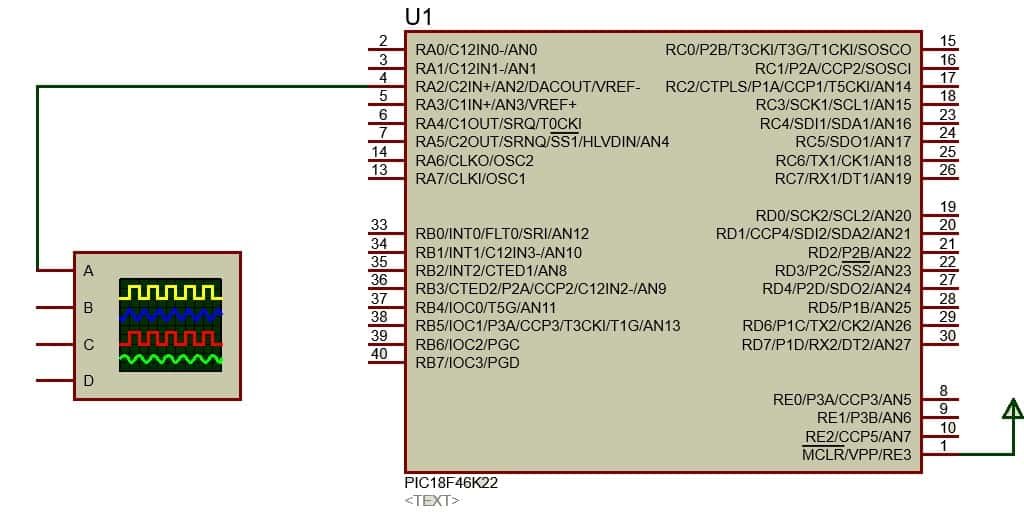

The Picadillo-35T features an on board FTDI USB to TTL converter for programming and powering the display, along with an ICSP connection for using programmers such as the PICKIT3. UECIDE can be used to program Arduino boards as well as chipKIT boards, and is compatible with many existing Arduino and chipKIT libraries, allowing easy migration from existing boards! Using UECIDE or MPIDE, the display module can essentially be treated as if it was a chipKIT MAX32 and programmed using the familiar programming language found on the Arduino/chipKIT. It can also be used with MPIDE, or even using Microchip MPLAB X. The Picadillo-35T has been designed to be programmed using the UECIDE IDE, which is based on the Arduino IDE however with various enhancements and improvements. The same PIC32 is found on the popular chipKIT Max32 Development Board. It features a PMP graphics port which is used to connect the on board 3.5" display, allowing for fast graphics fully controlled by the Users code.

The PIC32MX795F512L is a powerful 32bit microcontroller from Microchip, which has 512Kb of Flash and 128Kb of SRAM, runs at 80Mhz and is capable of 105 DMIPS. It features a 3.5" display along with a ton of GPIO, making it a perfect candidate for system control which demands a GUI or user interface. The Picadillo-35T was designed with complete system control in mind. The Picadillo-35T is a 3.5" 320x480 resolution (Half VGA) Embedded Display Module with Resistive Touch, featuring the Microchip PIC32MX795F512L 32bit microcontroller and Arduino / chipKIT style headers for easy attachment of shields, and compatible with UECIDE, MPIDE and MPLAB X Programming IDEs, making this a brilliant display solution with open source software.
Mplab xc8 lcd h how to#
In the next post, I’ll show you how to set up timers, and using them, blink an LED in precise intervals (later we’ll also make a digital clock).Amazing 3.5" Display Module powered by a PIC32 We do the same for the direction of these pins, but instead of register PORT we need to use TRIS. We’ll call the three LCD pins RS, RW, EN LCD_rs, LCD_rw, LCD_en then we’ll call the data lines on PORTD (RD0-RD7) LCD_data and specifically we’ll call the busy flag connected to the PORTD pin RD7 as LCD_busy. The following defines are based on our schematic above. This will make it easier for us to reference these pins in the program - instead of using, say, PORTBbits.RB2 which doesn’t tell us anything about the pin’s function, we’ll be able to use LCD_en which stands for the LCD’s enable pin.
Mplab xc8 lcd h software#
Software Pin definitionsįirst, we need to define which pins of the LCD correspond to which pins of the PIC MCU. You should check all of these connections using your LCD’s datasheet since each LCD can have different pinouts. And that’s it - now we’re ready to move to the programming part. Additionally, if the pins 15 and 16 are present, they can be connected to Vcc and GND respectively with a resistor in series, to power the backlight of the LCD. The contrast of LCD is depends on the input voltage on pin CONTR, which is controlled by a 10kΩ potentiometer sitting between GND and Vcc. Data lines D0-D7 are connected to PIC’s pins RD0-RD7. LCD’s power supply is (obviously) connected to GND and Vcc (in my case 5V). Pins RS, RW, EN of the LCD are connected to the PIC’s pins RB0, RB1, RB2. We’ll start by wiring up the LCD to the PIC as shown on the schematic below.
Mplab xc8 lcd h driver#
LCD display (with driver HD44780 or compatible, preferably 16×2 characters).

What we are going to do, however, is to make our own functions for all the common uses using that theory. Since the theory is, in my opinion, quite well written there, I won’t go into detail about RS, RW, EN, DDRAM, CGROM, busy flag, etc. Also, we’re going to use the 8-bit interface, but it can easily be modified for 4-bit as well.įirst, I recommend you to read Cytron’s tutorial on LCD interfacing ( part 1 and part 2), which is a very good source on this topic and the one I learned from. We’ll interface this LCD to a PIC18F452 MCU ( datasheet), although similar PICs should work as well.

Mplab xc8 lcd h download#
You’ll also be able to download my LCD library containing all the functions described in the post and many more which you can use in your own projects.Īll the following setup is written for LCDs using the popular HD44780 driver ( datasheet) or compatible (such as ST7066). This means we’ll make our own functions for displaying characters, strings and numbers and functions for clearing the display, turning it on/off and so on. In this post I’ll show you how to interface an LCD display with a PIC microcontroller from scratch, using no external library.


 0 kommentar(er)
0 kommentar(er)
